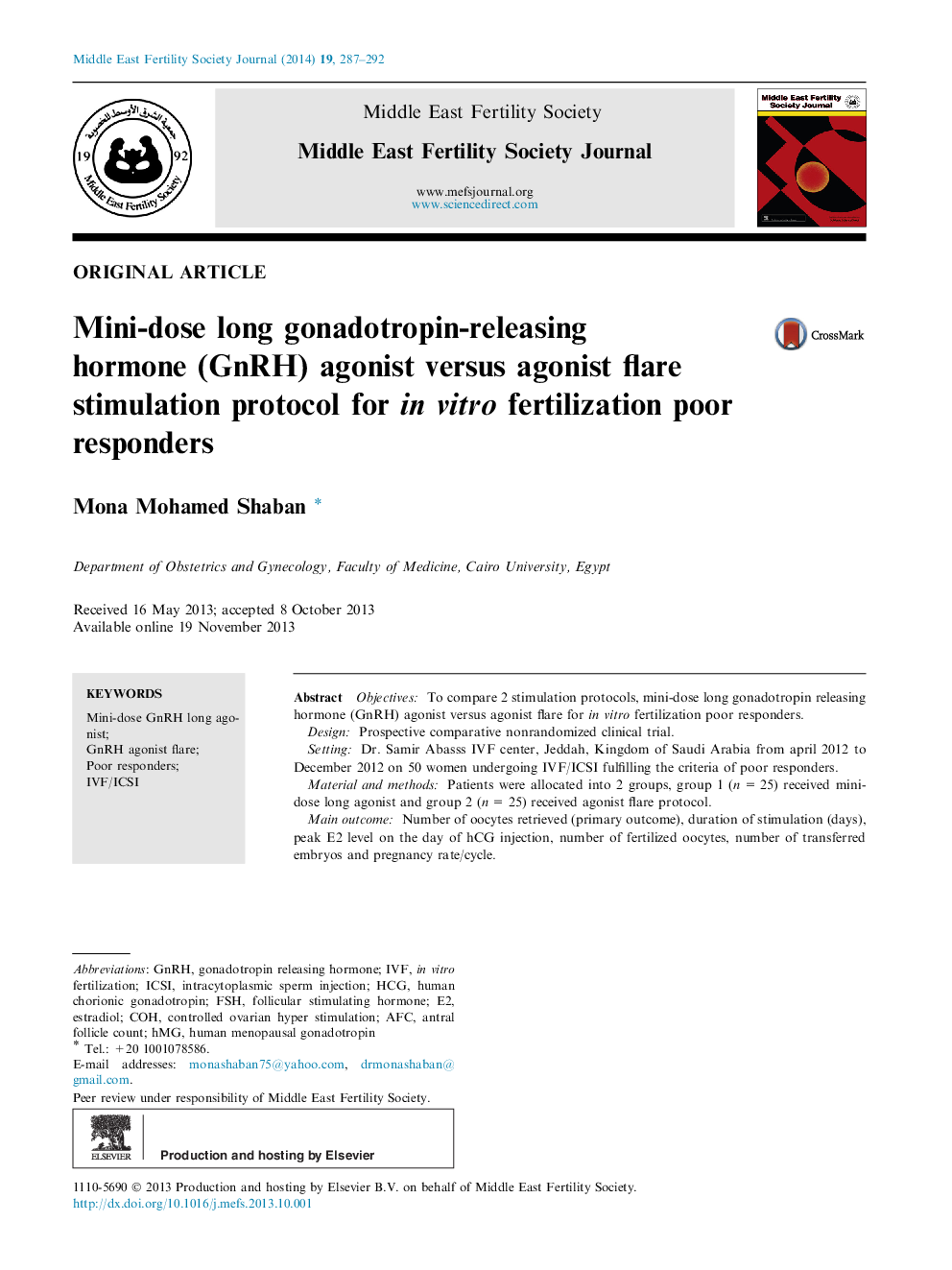| Article ID | Journal | Published Year | Pages | File Type |
|---|---|---|---|---|
| 3966118 | Middle East Fertility Society Journal | 2014 | 6 Pages |
ObjectivesTo compare 2 stimulation protocols, mini-dose long gonadotropin releasing hormone (GnRH) agonist versus agonist flare for in vitro fertilization poor responders.DesignProspective comparative nonrandomized clinical trial.SettingDr. Samir Abasss IVF center, Jeddah, Kingdom of Saudi Arabia from april 2012 to December 2012 on 50 women undergoing IVF/ICSI fulfilling the criteria of poor responders.Material and methodsPatients were allocated into 2 groups, group 1 (n = 25) received mini-dose long agonist and group 2 (n = 25) received agonist flare protocol.Main outcomeNumber of oocytes retrieved (primary outcome), duration of stimulation (days), peak E2 level on the day of hCG injection, number of fertilized oocytes, number of transferred embryos and pregnancy rate/cycle.ResultsBoth groups were comparable regarding age, body mass index and duration of infertility (years). The difference in basal FSH and duration of stimulation (days) does not reach statistical significance (p value 0.833 and 0.373 respectively). There was a high statistical difference between both groups regarding peak E2 on day of hCG injection, number of oocytes retrieved, number of fertilized oocytes, number of transferred embryos; which is higher in the mini-dose agonist group (p value 0.00).Pregnancy rate/cycle was higher in the mini-dose agonist group (9/25 vs. 6/25) however this difference does not reach statistical significance (p value 0.355) which may be attributed to small sample size or advanced maternal age.ConclusionMini-dose long GnRHa stimulation protocol appears to be more beneficial for poor responders than GnRHa agonist flare.
